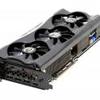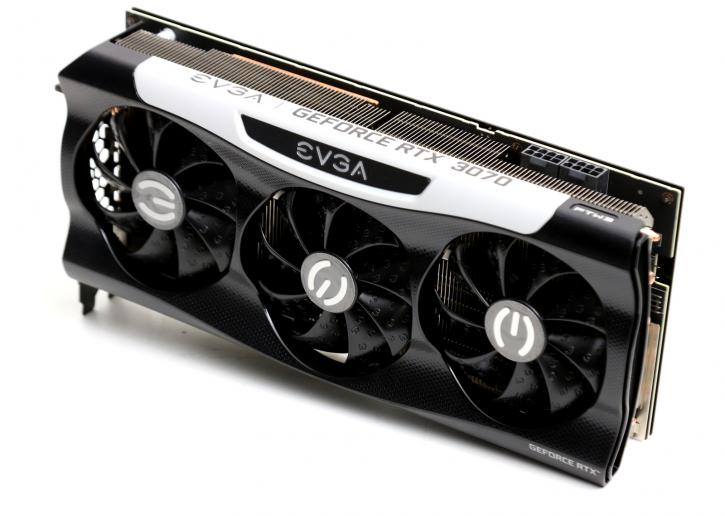Introduction
EVGA GeForce RTX 3070 FTW3 Ultra review
We review and benchmark a custom design GeForce RTX 3070, this round the EVGA GeForce RTX 3070 FTW3 in specific in its Ultra edition. We'll plant this card in our test system to see how well it performs. EVGA advanced on the design for the FTW3 series, it looks dignified in a dark aesthetic design. Compared to last-gen, this product will sit spot on GeForce RTX 2080 Ti performance levels and, in due time, will be its replacement.
Back in September 2020, NVIDIA declared three initial Ampere graphics cards in its inaugural launch wave. A week before announcements, specifications of the GeForce RTX 3070, 3080, and 3090 took a twist; the shader core count mysteriously doubled up from what everybody expected. The GPUs are fabricated on an 8nm node derived from Samsung. This process is a further development of Samsung's 10nm process; no EUV is applied in production just yet. The first wave of announcements would see the GeForce RTX 3080 and 3090 being released first, and, as a bit of a surprise, the GeForce RTX 3070 would be arriving in roughly the same timeframe as well. The initial launch of Ampere for consumers entails the GeForce RTX 3070 8GB GDDR6, RTX 3080 10GB GDDR6X, and what we test today, the 24GB GDDR6X based premium flagship, the mighty mo, the GeForce RTX 3090. The lineup nearly doubles ray-tracing performance with Gen2 ray-tracing cores and 3rd iteration Tensor cores. These cards will all be PCIe 4.0 interface compatible and offer HDMI 2.1 and DisplayPort 1.4a, but most importantly is that exorbitant Shader processor count (referred to as CUDA cores by NVIDIA), passing the 10K marker for the flagship product, nobody... not even us, saw that one coming. With roughly half that shader processor count, we now meet the NVIDIA GA104 GPU, initially to be used solely in the GeForce RTX 3070 graphics cards. And despite a lower segmented card, it still holds a big GPU die; the 3070's GA104-300-A1 GPU is firing up over 17 billion transistors. To compare, a GeForce RTX 3080 is listed at 8,704 Shader cores, and the GeForce RTX 3090 (GA102) has 10496 Shader cores. In this review, we'll check out the Founder edition GeForce RTX 3070, paired with 8GB of GDDR6 graphics memory. A product that runs a boost clock of 1730 MHz and the sheer muscle power makes you smile, a lasting one.
| Model | Base Clock (MHz) | Boost Clock (MHz) | VRAM Base Clock (MHz) | VRAM Effective Datarate (MHz) | Max Power %left |
| GeForce RTX 3070 | 1500 | 1730 | 1750 | 14000 | 109 |
| ASUS TUF RTX 3070 Gaming | 1500 | 1815 | 1750 | 14000 | 112 |
| PALIT RTX 3070 JetStream OC | 1500 | 1815 | 1750 | 14000 | 122 |
| EVGA RTX 3070 FTW3 Ultra | 1500 | 1815 | 1750 | 14000 | 111 |
| MSI RTX 3070 Gaming X TRIO | 1500 | 1830 | 1750 | 14000 | 104 |
At the time of writing the FTW3 Ultra can be purchased at the EVGA website for $679, here in the EU a quick lookup reveals that price to sit in the € 749,- region. Prices will likely further increase, due to ongoing global price wars, so it is hard to foresee what future pricing will do. And yes we understand this is a tough pill to swallow for a product series that belongs in the 499 USD price bracket. The EVGA GeForce RTX 3070 FTW3 Ultra is fitted with that NVIDIA GA104 GPU; it has a satisfactory 5888 shader cores activated and is paired with 8GB GDDR6 graphics memory. EVGA offers the card configured in a semi-passive design at default BIOS mode; the triple fans start to spin and cool once the GPU warms up (fan-stop). You'll notice it has 2x 8 (6+2) pin power connectors. The FTW3 includes a custom-design PCB topped off with an iCX3 cooler, which stars three copper heat pipes that pull heat through a copper base-plate, moving it towards two aluminum fin-stacks that get ventilated by a threefold of independently controlled fans. The FTW3 Ultra version has RGB LED decoration located at the top cooler side of the card. Looking a bit further you'll also spot a duo of aRGB and PWM fan headers at the rear side.
The card is rated by us with a typical 260W power draw, a value that is 220W for the reference design. This indicates it will perform a notch better at default clocks as EVGA allows a bit more power to boost performance. Weighing in at close to 1250g, this graphics card on the big side of the spectrum, 300 x 137 x 50 mm. A dual BIOS is present, both modes offer the out of the box boost clock for this product is 1815 MHz (where 1730 MHz is the FE reference clock), and it's memory clocked at reference 14 Gbps (14 Gbps reference). But hey, let's start up this review, shall we?


